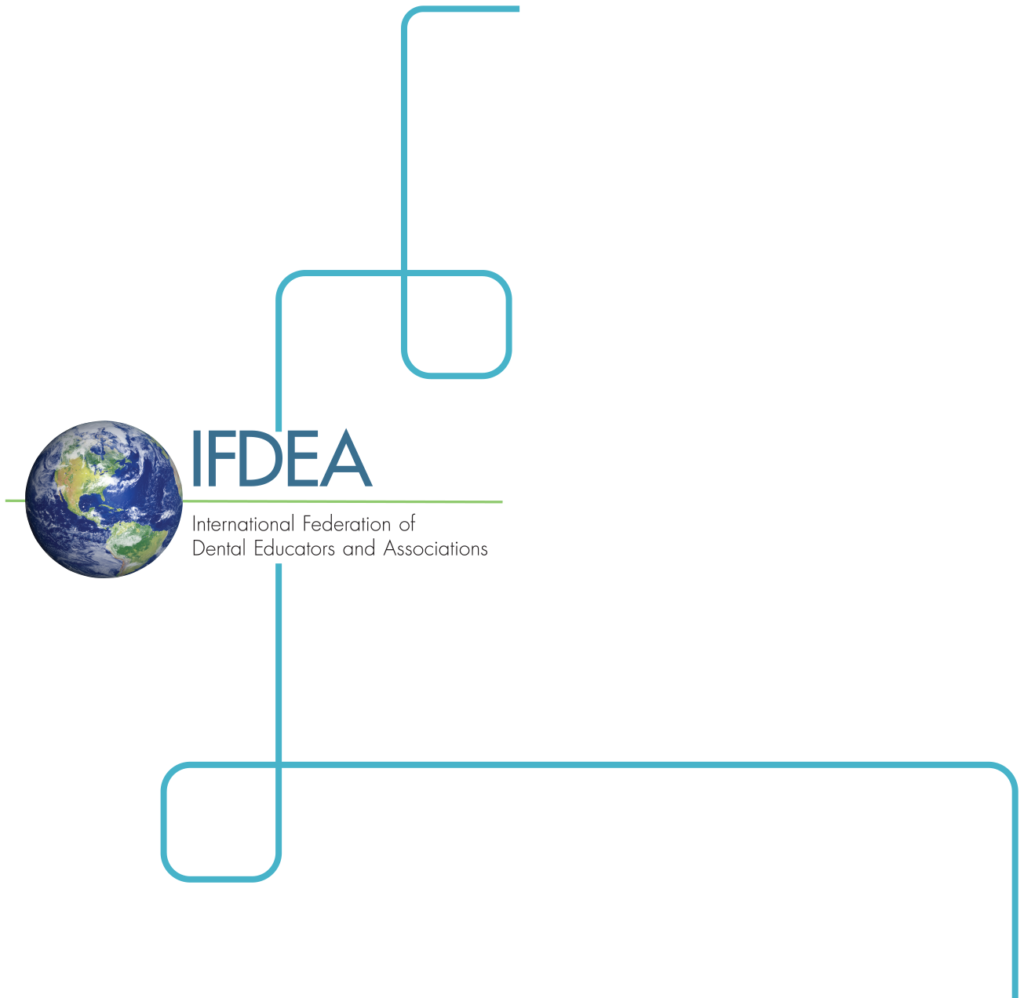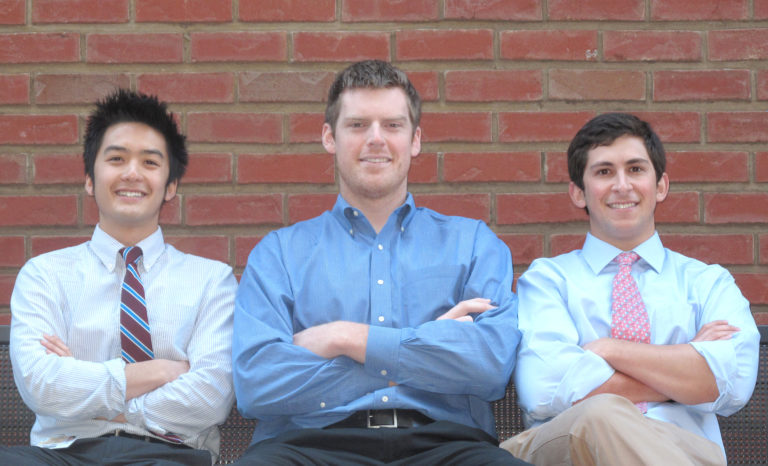by Patrick J. Ferrillo, Jr.
Around here, we often say, “The greatness of Pacific Dugoni is its people.” No one can imitate what we do because no one else has built, over decades, a group so completely dedicated to making its school great. Others have yet to figure out that it is not just the faculty, the students, alumni or any other single factor. It is everyone continuously working together to reinvent ourselves.
Planning To Advance Greatness
I am proud of our strategic plan (which you can learn more about on our website). But the real story is how this plan was created, continuously updated and is being implemented. We are actually in the plan’s third stage; having framed the original plan and completed the implementation, we are now working on a revision of the plan. There is not a student, faculty or staff member or alumnus who has not been invited to participate, and literally hundreds of people have—in town hall meetings, via surveys, by making specific recommendations or joining writing groups, as well as assisting in the changes that have taken place in our curriculum, our teaching philosophy and departmental restructuring.
Dr. Alan Gluskin ’72, co-chair of the Department of Endodontics, who led the first Strategic Planning Committee, laughs as he explains, “We only accomplished half of our recommendations during the first few years of the original plan. Of course we had more than 200 recommendations, so half of that is pretty good progress.”
[pullquote]Our strategic plan is about reaching beyond boundaries.[/pullquote]
The process has been as important as the product. After all, many dental schools have binders of strategic plans on shelves in somebody’s office. But using an inclusive approach to planning and implementation, rotating the leadership and guiding the process with professional outside consultants, we have increased our school family’s sense of ownership. Through the process of ensuring comprehensive participation, we have truly been discovering who we are.
Rethinking the Educational Experience
The term “curriculum” is almost obsolete here. That word conjures up images of isolated courses that are fit together in some pattern, often dictated by time and faculty considerations. Because we are competency-based, everything is now focused on students’ learning experiences.
Our strategic plan is about reaching beyond boundaries. It is focused on preparing oral healthcare providers for scientifically based practice through developing evidence-based decision making and critical thinking across the curriculum; calibrating and cross training faculty across behavioral, biomedical and clinical sciences; and increasing interprofessional collaborative opportunities. The Helix Curriculum is now in our genes.
We have moved away from merely teaching course content and toward providing a rich network of experiences designed to educate a balanced professional, who is not only practice ready today, but equipped to be so well into the future of the evolving profession. Sequences of small lectures have been replaced by large strands of integrated experiences. Currently in place are the preclinical, clinical sciences, medical sciences and clinical practice strands. A fifth personalized instructional program strand will promote student and faculty individualized personal development and is in the pilot-testing phase.
The goal is that both students and faculty members will grow in their ability to put together all their knowledge and skills and apply them to patient care. It is good to know the nuggets of dental knowledge and to have the technical skill to fabricate beautiful work. But the ultimate test is being able to deliver this in patient care. Thus, most instruction now — both in the clinic and the didactic portion of the program, and even into the community — is taught by teams of faculty members, and is case-based, interactive and participatory.
The curriculum is articulated as well as being integrated. Meaningful opportunities to integrate material are not left to chance. Each of the strands has or will have its own coordinator. Coordinating is a full-time job done by individuals who are not faculty members but are experts in managing learning; know how to use computers to deliver material and track outcomes; and are here full time to follow up on all the details. Faculty members are knowledge and skill experts; the coordinators manage the educational experiences by arranging logistics, teaching materials and evaluation.
Group Practice Clinic Model
The clinic model is also being reworked to deliver state-of-the-art care and outstanding patient experiences in a setting that resembles private practice. Pacific has always been at the forefront of dental education in this area. Jim Pride, when he was clinical dean in 1972, developed the concept of comprehensive patient care where patients are assigned to students rather than to departments. That approach has since been imitated by every other dental school. In 1998, then-Associate Dean of Academic Affairs Dave Chambers pilot tested a program to determine whether smaller clinic practices would improve care. Two randomly chosen cohorts of students and two faculty team leaders were chosen to determine what group size was small enough so students felt responsible to each other, and to see where private practice concepts such as team meetings, productivity monitoring and coordination of patient care across team members would make a difference. Although we were not ready to implement our finding at the time, the outcomes data demonstrated that this model, compared with the rest of the clinic, leads to significant improvements in student grades, patient satisfaction, clinic income and—most important of all—to objective measured improvements in patient oral health. We are now well into the planning and incremental implementation of this model.
We Need a Bigger Box
Innovations in our educational and clinical programs have caused us to run up against unexpected limitations. The building that was right for us 46 years ago is no longer up to the task. So we are moving on and forward.
Our new campus in San Francisco’s South of Market area addresses three needs. First, it will give us the flexible seminar and clinical facilities to support our new model of dental education. Second, it will open up a new patient base and a presence for the school in the heart of the City. Third, it is making us focus on the big picture. By the time the architects ask, “Where do you want this to go?” we already have had to think through the educational and patient care effects. Much like the strategic planning process that vitalized the entire school, planning for the move to Fifth Street has pulled together teams of faculty, staff, students and everyone else affected by the change to work through what matters and understand how the solutions for one group affect the way others operate. It is like putting on a new suit or a new dress. When we look in the mirror we see who we are in a new way.
The new building has also made it crystal clear that the Dugoni School of Dentistry is not an isolated community. We have a strong tradition of community outreach. Our new location will immerse us in a new community, with a different mix of patients. This pending move has reminded us of our University’s tradition of community collaboration and international exchanges. The need for the change and the opportunities it presents has not been lost on our alumni. The response from our rich network of former students and friends has been positive and has been demonstrated in very tangible support.
Global Footprint
Pacific Dugoni is expanding even beyond its new home in the heart of San Francisco. Our well-established and highly regarded International Dental Studies program has built our school’s reputation throughout the world. But consider opportunities on the ground in Alexandria, Egypt; Wenzhou and Beijing, China; Kuwait and Europe. We have formal exchanges with schools in all of these areas, ranging from hosting students and faculty, to tours, to an innovative program involving our AEGD program and the Benard School of Education on the Stockton campus and to resource sharing for degree programs in China. The students’ traditional dental mission trips have been brought under the school’s formal umbrella for purposes of coordination, insurance and supervision.
I have served as the president of the board of directors of the International Federation of Dental Educators and Associations (IFDEA) whose mission is to create a global community of dental educators joining together to improve oral health by sharing knowledge and raising standards. This has proven to be a robust platform for our faculty, students and alumni to share with their colleagues around the world.
Technology Matters
Before I arrived, the school had passed through the necessary stages of acquiring computers for a select group of technical experts and then equipping smart classrooms and clinics. We are now well into the phase of implementing technology for learners. We have installed AxiUm—a turnkey comprehensive record and management system—for all our clinics. The training for faculty, staff and students in how we use computers in patient care and in teaching is extensive. However, training is an opportunity as well as a cost. Education and patient care are now more responsive, more accurate and more coordinated. We have been more fortunate than most dental schools that must compete with other programs on a university campus for common resources. We have our own staff and resources, and they are outstanding.
An unanticipated benefit of technology has been the need to share and coordinate, as technology makes this easier. The days are rapidly disappearing when treatment of a patient in one specialty area could proceed without affecting other departments. Faculty members, who practice and teach one or two days per week, can now consult electronically on the care of patients who are here on other days. The clinical competencies of students needed in each quarter automatically feed the design of preclinical and didactic instruction. Faculty members can easily find out about what their colleagues and the students are doing. And, they can participate in planning and case management. All of this is translated into school-wide standards rather than departmental or individual ones.
Who Are We?
The strategic plan calls for three other broad goals: define new standards for education; discover and disseminate knowledge; and actualize individual potential. One might be fooled like the boy who watched the marching bands, the clowns and the elephants, and dignitaries but asked, “Where is the parade?” Pacific Dugoni is not a plan or the new building or a curriculum or a program: it is the people who do those things so well. Making the program better means building the potential of everyone in the building and the way they interact.
We have worked with the Stockton campus to deliver a doctoral program in education to almost a dozen faculty and staff. We are exploring a degree completion program for staff who need a few more courses to earn their first degree. Karl Haden and his Academy of Academic Leadership have a branch office on Webster Street (or so it seems). He has brought management expertise in planning and curriculum development and conducted about 15 days of basic teaching skills programs for faculty and staff.
The traditional lines in dental education that separate students, faculty and staff have held back dental education. These lines are being blurred at Pacific Dugoni. Faculty members are becoming learners, staff members are becoming effective managers and students are valuable resources for community health.
Recently, as I passed through Café Cagnone, I chatted with Drs. Frank Brucia ’44 and Irwin Marcus ’48 Ortho. I have seen them pouring over the portfolios of candidates for admission around the holiday season since I came to Pacific Dugoni in July of 2006. The conversation is always the same. “Dean, we must be doing something right. I just had an interview with one of the most qualified, actively involved and interesting young persons who wants to come here to be a dentist. And they just keep coming and they just keep getting better.” “Yes,” I say, “We are doing many things right. And I thank you and I thank all the others who make this happen. If you don’t stop, we are unstoppable.”
I can see the future of dentistry from here. It is who we are.




